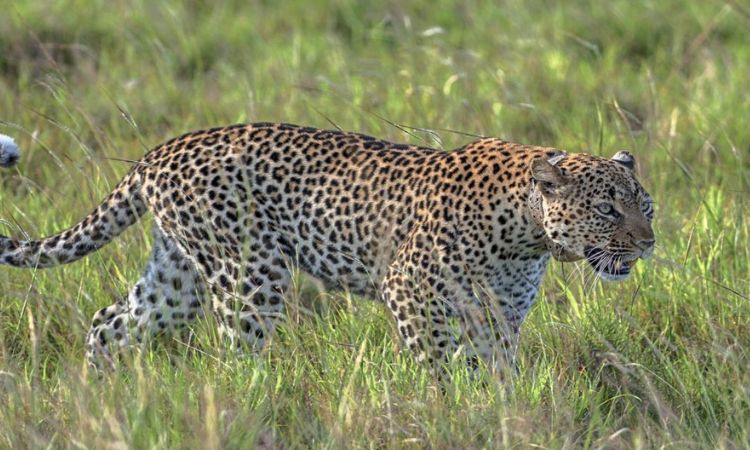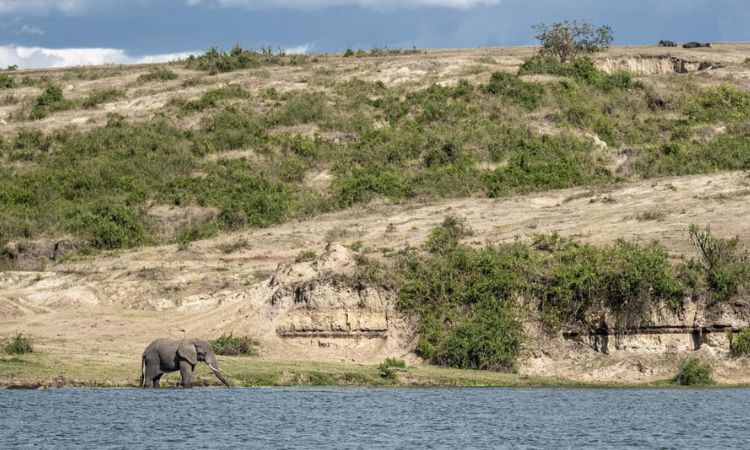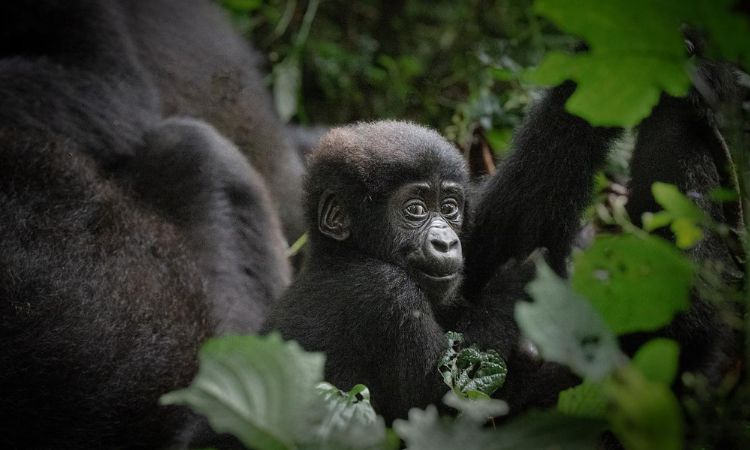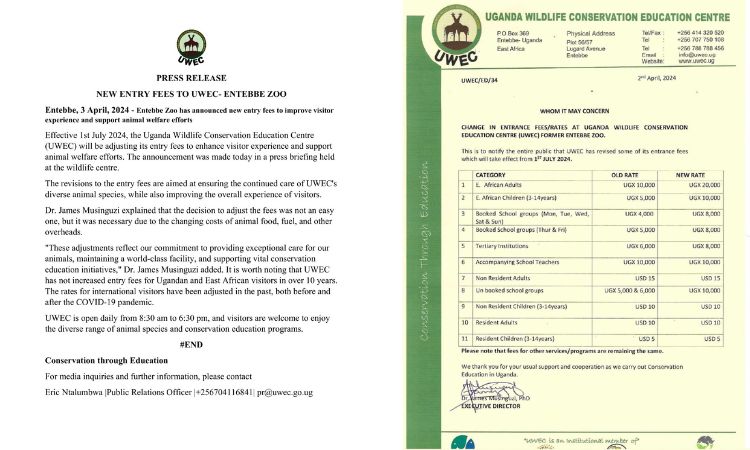Mountain Gorilla Predators and Prey: 2 gorilla natural enemies
Mountain gorillas also scientifically called Gorilla beringei beringei, a subspecies of the eastern gorilla, inhabit the dense forests of the Virunga Mountains spanning Rwanda, Uganda, and the Democratic Republic of Congo, as well as Uganda’s Bwindi Impenetrable National Park.
These majestic primates, known for their robust build and social behaviors, play a unique role in their ecosystem. Understanding their predators, prey, and dietary habits provides insight into their survival in the wild.
In this comprehensive guide, you are to know the mountain gorilla predators, what eats gorillas in the wild, gorilla natural enemies, gorilla prey, mountain gorilla diet, what do gorillas eat in the wild, are gorillas prey or predators, and gorilla survival in the wild.
Are Gorillas Prey or Predators?
To address the question, are gorillas prey or predators, mountain gorillas are primarily neither apex predators nor frequent prey. They are herbivorous primates with a social structure that prioritizes group defense, making them less vulnerable to predation.
Unlike carnivorous predators, mountain gorillas do not hunt animals for food, as their diet is almost entirely plant-based. However, they are not entirely free from threats, and their role in the food chain is complex.
Their massive size—males can weigh up to 430 pounds (195 kg)—and group living deter most natural predators. Yet, they face risks from specific threats, which we’ll explore under mountain gorilla predators and gorilla natural enemies.

Mountain Gorilla Diet: What Do Gorillas Eat in the Wild?
The mountain gorilla diet is predominantly vegetarian, answering the question what do gorillas eat in the wild. Mountain gorillas consume a variety of plant materials, including leaves, stems, pith, bark, roots, and fruits.
Their primary food sources are found in the lush, montane forests they inhabit. Common plants in their diet include wild celery, bamboo shoots, nettles, thistles, and the leaves of Galium plants.
Bamboo, in particular, is a seasonal favorite in areas like the Virunga Mountains, where gorillas may spend hours stripping shoots to eat the tender inner parts.
Fruits, when available, make up a small but significant portion of their diet, especially in Bwindi, where fruiting trees are more abundant than in the Virunga region.
Mountain gorillas also occasionally consume small amounts of protein from insects like termites, ants, or grubs, but this is minimal compared to their plant intake.
They have been observed eating soil or clay, likely to supplement minerals like sodium. An adult male may consume up to 75 pounds (34 kg) of vegetation daily, while females eat slightly less, around 40 pounds (18 kg).
This high-fiber, low-protein diet supports their large bodies and sustains their energy needs for foraging and social activities.
Their diet directly influences their role as gorilla prey, or rather, their lack thereof. Since they do not hunt or consume animal prey, mountain gorillas are not predators in the traditional sense.
Instead, they are folivores, shaping their ecosystem by dispersing seeds and maintaining forest vegetation through their feeding habits.
Gorilla Prey: Do Gorillas Have Prey?
When considering gorilla prey, mountain gorillas do not actively hunt or prey on other animals. Their herbivorous lifestyle means they do not target living creatures as food sources.
The occasional consumption of insects is opportunistic rather than predatory behavior. This lack of predatory activity distinguishes mountain gorillas from carnivorous or omnivorous species and reinforces their position as non-predators in their ecosystem.
Their feeding habits focus on abundant, renewable plant resources, which supports their survival without competing with carnivores for animal prey.
Mountain Gorilla Predators: What Eats Gorillas in the Wild?
The question what eats gorillas in the wild leads us to explore mountain gorilla predators. In their natural habitat, mountain gorillas face few natural predators due to their size, strength, and group dynamics. However, two primary threats are often cited as gorilla natural enemies: leopards and humans.
Leopards:
Leopards are the only significant natural predator of mountain gorillas. These stealthy big cats are capable of preying on young, sick, or isolated gorillas. Leopards are opportunistic hunters, and while adult male gorillas (silverbacks) are formidable opponents, a leopard may target a juvenile or an infant separated from the group.
Evidence of leopard predation is rare, as gorillas’ cohesive group structure and defensive behaviors—such as charging or displaying by silverbacks—deter most attacks. In the dense forests, leopards rely on ambush, but gorilla vigilance and strength make successful attacks uncommon.
Humans
The most significant threat to mountain gorillas comes from humans, making them the primary gorilla natural enemies. While humans do not eat gorillas, their actions—poaching, habitat destruction, and incidental harm through snares—pose severe risks.
Poaching for bushmeat or the illegal pet trade has historically targeted gorillas, though conservation efforts have reduced this.
Habitat loss from deforestation and agriculture encroaches on gorilla territory, forcing them into smaller areas and increasing human-wildlife conflict. Snares set for other animals, like antelopes, can injure or kill gorillas, particularly infants or juveniles.
Additionally, human-transmitted diseases, such as respiratory infections, are deadly to gorillas, who lack immunity to many human pathogens.
Other potential predators, such as hyenas or crocodiles, are not significant threats, as they rarely share habitats with mountain gorillas or lack the ability to challenge a gorilla group. The absence of large carnivore populations in high-altitude gorilla habitats further reduces predation risks.
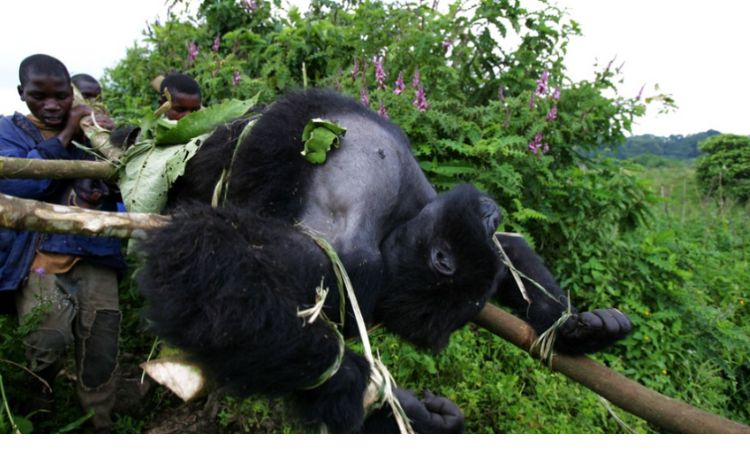
Gorilla Natural Enemies: Beyond Predators
The term gorilla natural enemies extends beyond direct predators to include environmental and anthropogenic threats. In addition to leopards and humans, disease plays a critical role.
Ebola virus outbreaks have decimated gorilla populations in the past, particularly in lowland gorilla habitats, though mountain gorillas are less affected due to their isolated ranges.
Parasites, such as intestinal worms, also impact gorilla health, weakening individuals and making them more vulnerable to other threats.
Intra-species competition can also be considered a natural enemy. Conflicts between gorilla groups, particularly between silverbacks vying for dominance or mates, can lead to injuries or death. Lone males may challenge a group’s silverback, resulting in violent encounters that threaten group stability.
Gorilla Survival in the Wild
Gorilla survival in the wild hinges on their ability to navigate these threats while maintaining access to food and habitat. Mountain gorillas live in cohesive family groups led by a dominant silverback, whose role is to protect the group from predators and rival males.
Their social structure enhances survival by ensuring collective vigilance and defense. For example, when a leopard is spotted, the silverback may emit alarm calls, gather the group, or confront the threat directly, often deterring the predator.
Conservation efforts have been pivotal for gorilla survival in the wild. Organizations like the Dian Fossey Gorilla Fund and park authorities in Rwanda, Uganda, and the DRC monitor gorilla populations, remove snares, and enforce anti-poaching laws.
Ecotourism, when managed sustainably, provides funds for conservation and incentivizes local communities to protect gorillas.
As a result, mountain gorilla populations have slowly increased, from a low of about 620 in the 1980s to over 1,063 today, though they remain critically endangered.
Their diet supports survival by relying on abundant vegetation, reducing competition with carnivores. However, climate change poses a growing threat, potentially altering the availability of food plants and forcing gorillas into higher altitudes with limited resources. Human encroachment continues to fragment habitats, making conservation critical to their long-term survival.
Gorilla survival in the wild depends on continued conservation, habitat protection, and managing human-wildlife interactions.
By understanding these dynamics, we can better appreciate the delicate balance that sustains these iconic primates in their montane forest homes.
